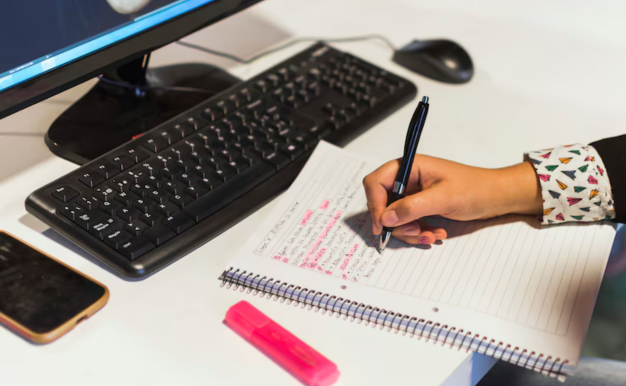December 1, 2024
Proven Strategies To Prevent Plagiarism in Content Writing

In the world of content creation, maintaining originality is not just a best practice—it’s a necessity. Plagiarism can have serious consequences, ranging from reputational damage to legal ramifications. As such, understanding and preventing plagiarism should be a top priority for anyone involved in writing and content production. Here’s an in-depth guide to help you ensure that your content is always original and authentic.
- What is Plagiarism?
- What Should You Consider Hiring a Content Writer?
- The Challenge of Plagiarism
- The Role of Google in Plagiarism Issues
- How To Avoid Plagiarism
- Utilizing Plagiarism Detection Tools
- The Importance of Original Research
- How To Properly Cite Your Sources
- Effective Paraphrasing Techniques
- Setting Clear Content Creation Guidelines
- The Value of Thorough Review and Editing
What is Plagiarism?
It’s a serious issue in content creation, as it undermines the integrity of the work and can have legal implications. Plagiarism doesn’t only refer to copying text word-for-word but also includes rephrasing someone else’s ideas or content without proper attribution. This is why it’s crucial to understand what constitutes plagiarism and to actively take steps to avoid it.
What Should You Consider Hiring a Content Writer?
One of the most effective ways to ensure the originality of your content is to hire a content writer. Professional writers are skilled in creating unique content tailored to specific needs and audiences. When you bring a content writer on board, you gain access to their expertise and experience in producing high-quality, original material. A professional writer understands the importance of avoiding plagiarism and is adept at crafting content that stands out. By hiring a content writer, you are not only ensuring the uniqueness of your content but also investing in someone who is dedicated to maintaining high standards of originality.
When discussing plagiarism, it’s important to distinguish between what truly constitutes plagiarism and what doesn’t. For instance, a recent case involved a writer accused of plagiarism for mentioning a conference and using some of its educational tracks. This situation highlights how easily misunderstandings can occur, especially in industries where certain terms and phrases are common and unavoidable. In my own experience, while writing for a specialized field, I’ve encountered similar issues, often having to ensure that the content I produce has zero duplicate elements. This sometimes demands significant effort and time to achieve.
The Challenge of Plagiarism
Finding the right balance in avoiding plagiarism is crucial. In many fields, certain expressions and terminology are repeated frequently, making it nearly impossible to avoid some level of duplication. It’s essential to navigate this challenge carefully, especially when working with content that must meet high standards for originality.
The Role of Google in Plagiarism Issues
Google plays a significant role in how duplicate content impacts search engine rankings. When a website contains duplicate content, it can confuse Google about which site should be considered the authoritative source. This confusion can lead to serious problems with search engine rankings, negatively affecting your website’s visibility. This issue is particularly prevalent among businesses that opt for inexpensive websites, which often use copied content from other sites. Although a low-cost website might seem attractive, the long-term cost of potential plagiarism issues can be much higher.
How To Avoid Plagiarism
To ensure that your content remains original, using a plagiarism checker is one of the simplest and most effective strategies. Tools like Copyscape are designed to help you verify that your content is unique. Additionally, the Grammarly plug-in includes a plagiarism checker that can be useful. Running your work through both tools is a prudent approach to safeguard against accidental duplication. Generally, minor instances of similarity, such as common phrases like “homes for sale” or “real estate agents,” are acceptable and unlikely to trigger penalties from Google.
It’s also wise to regularly check your own website for potential plagiarism. Tools like Copyscape can help you monitor whether your content is being copied by others. Keeping an eye on this can be a proactive step in protecting your content and maintaining its originality.
Utilizing Plagiarism Detection Tools
Incorporating plagiarism detection tools into your content creation workflow is a practical step towards preventing plagiarism. Tools like Copyscape, Grammarly’s plagiarism checker, and Turnitin are designed to scan your text and compare it with an extensive database of sources. These tools can identify potential issues and highlight areas where your content may inadvertently overlap with existing material. By using these tools, you can detect and address any instances of unintentional plagiarism before your content is published, thus safeguarding your work and maintaining its integrity.
The Importance of Original Research
Original research is a cornerstone of unique content. When you base your writing on your own research, interviews, or surveys, you naturally produce original material that adds value to your field. Conducting original research not only helps you avoid plagiarism but also enhances the credibility of your content. By providing new insights or perspectives, you contribute to the body of knowledge in your area of expertise, making your content more valuable and distinct.
How To Properly Cite Your Sources
Proper citation is essential when you use information or ideas from other sources. Giving credit to the original authors or creators is a key aspect of avoiding plagiarism. There are various citation styles, such as APA, MLA, and Chicago, and it’s important to follow the one that is appropriate for your content. Proper citations include not just direct quotes but also paraphrased ideas and data. This practice demonstrates your commitment to academic and professional integrity and ensures that you are acknowledging the contributions of others to your work.
Read More-: how hiring a content writer can boost your seo strategy?
Effective Paraphrasing Techniques
Paraphrasing is a useful skill in content writing, but it must be done effectively to avoid plagiarism. Effective paraphrasing requires a deep understanding of the material so that you can express the ideas freshly and originally. Simply changing a few words or rearranging sentences is not enough. Instead, aim to fully grasp the concepts and reframe them in your own voice to produce unique content.
Setting Clear Content Creation Guidelines
Establishing clear guidelines for content creation can prevent plagiarism and ensure consistency in your content. Outline your expectations for originality, citation practices, and research in your content policy. By providing a structured framework, you help your team understand and adhere to the standards for creating unique and authentic content. Clear guidelines also make it easier to review and monitor content to ensure compliance with your standards.
The Value of Thorough Review and Editing
Before publishing any content, a comprehensive review and editing process is essential. This stage allows you to catch any instances of accidental plagiarism or similarities with existing work. Editing not only helps in identifying and addressing potential issues but also enhances the overall quality of your content. A meticulous review process ensures that your content meets high standards of originality and professionalism.
By adopting these strategies, you can effectively safeguard your content against plagiarism and uphold a high standard of originality. Whether you choose to hire a content writer or take a more proactive approach yourself, focusing on these practices will help you create unique, credible, and valuable content.
Tags-:





